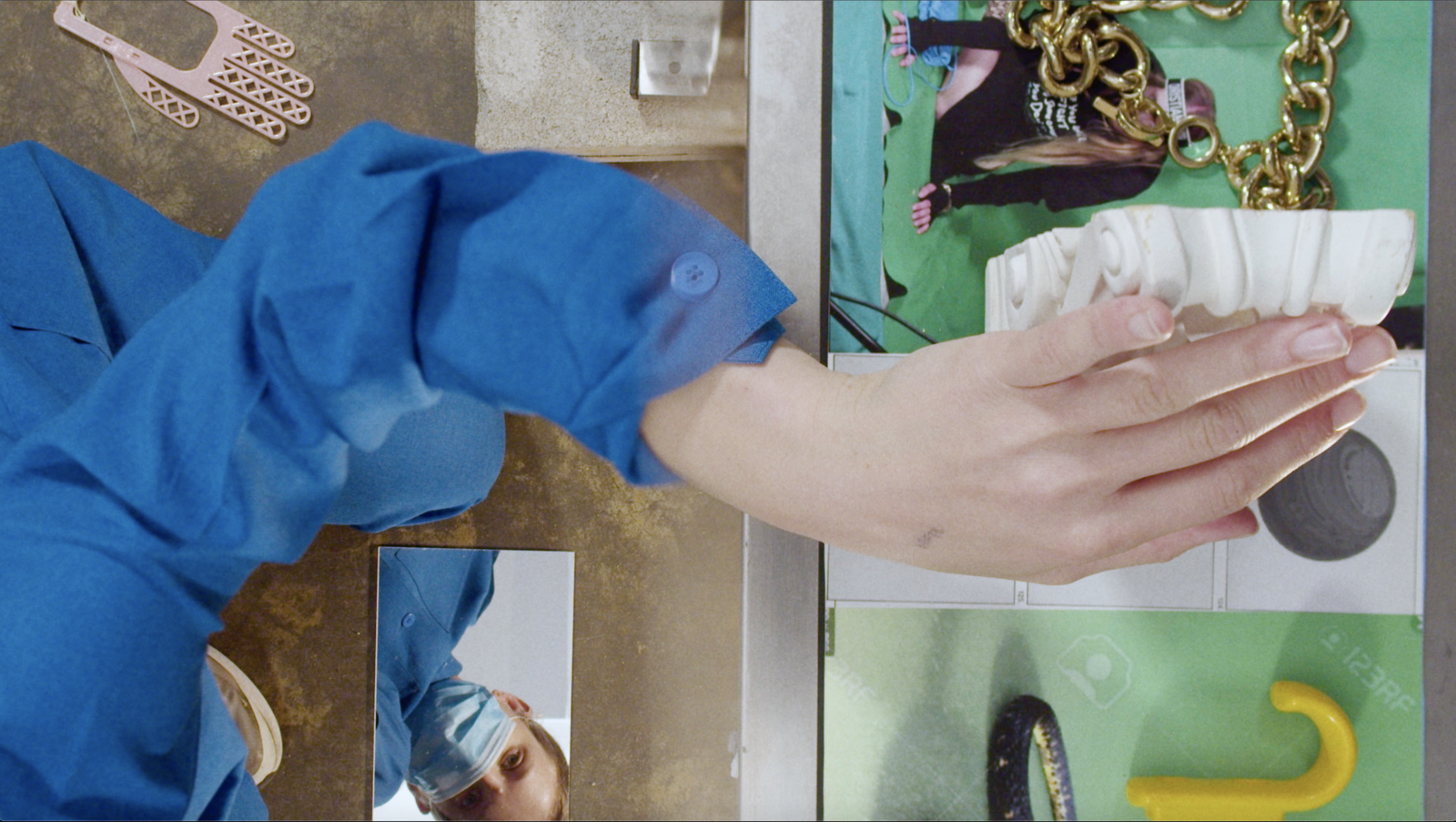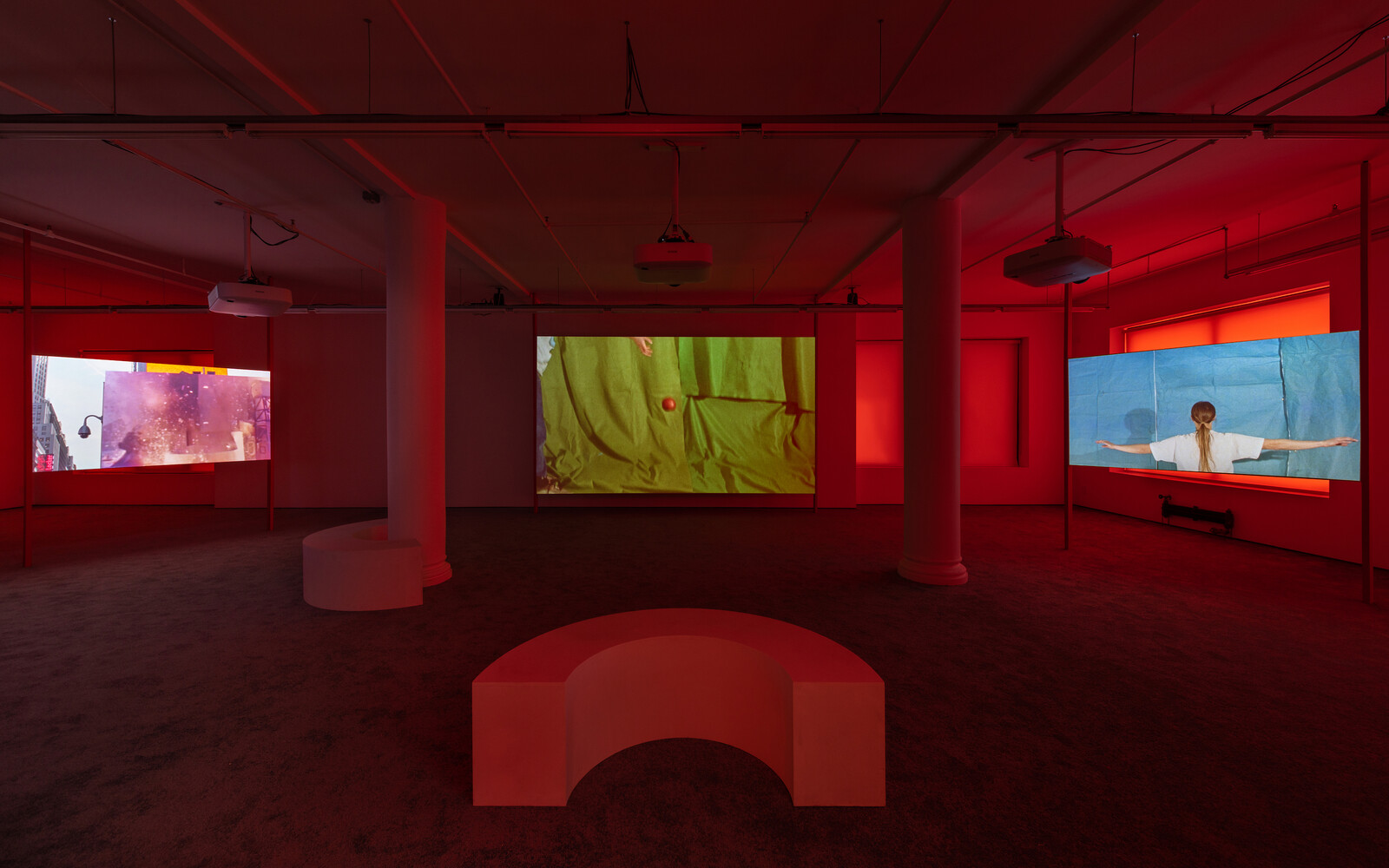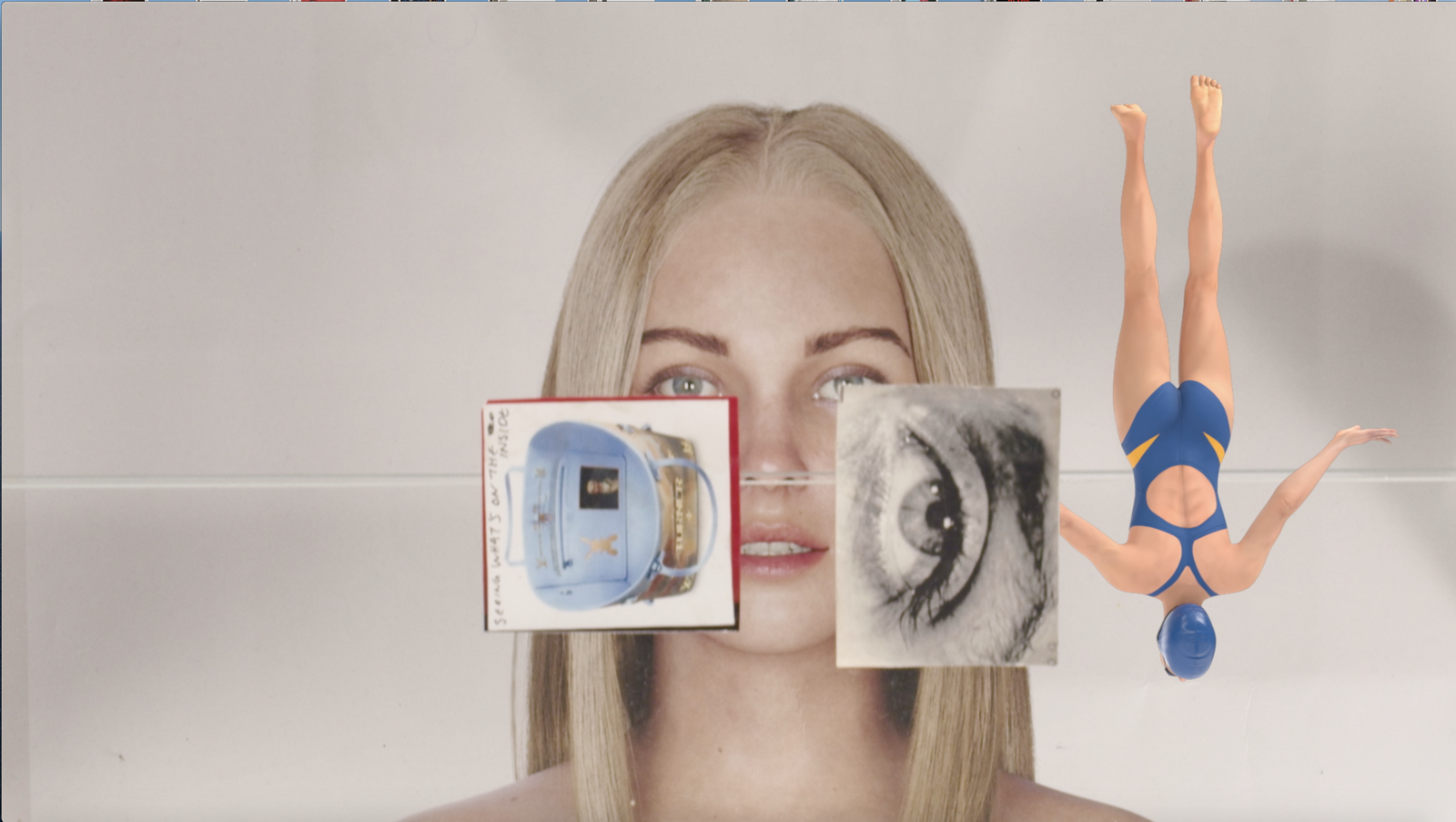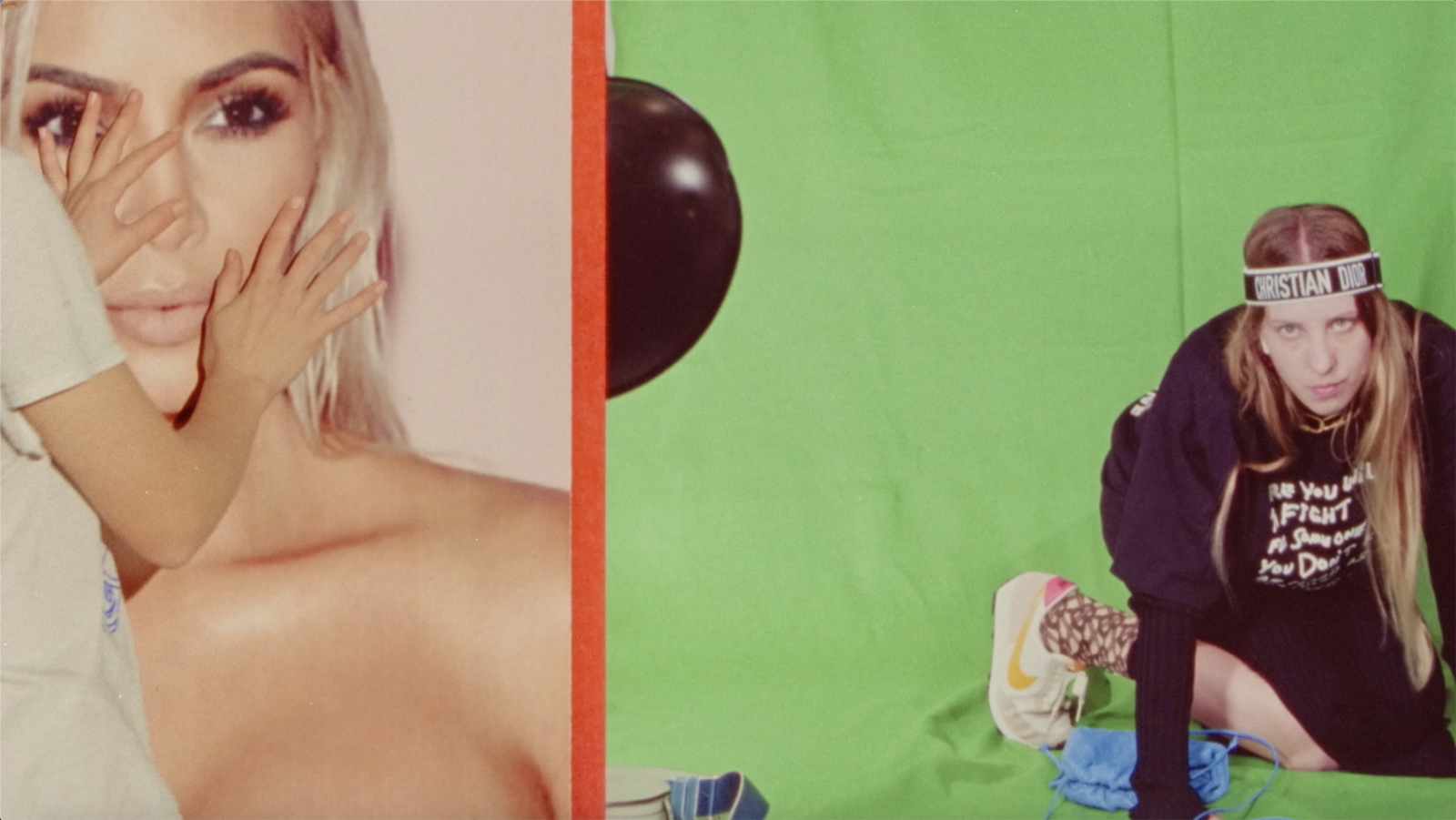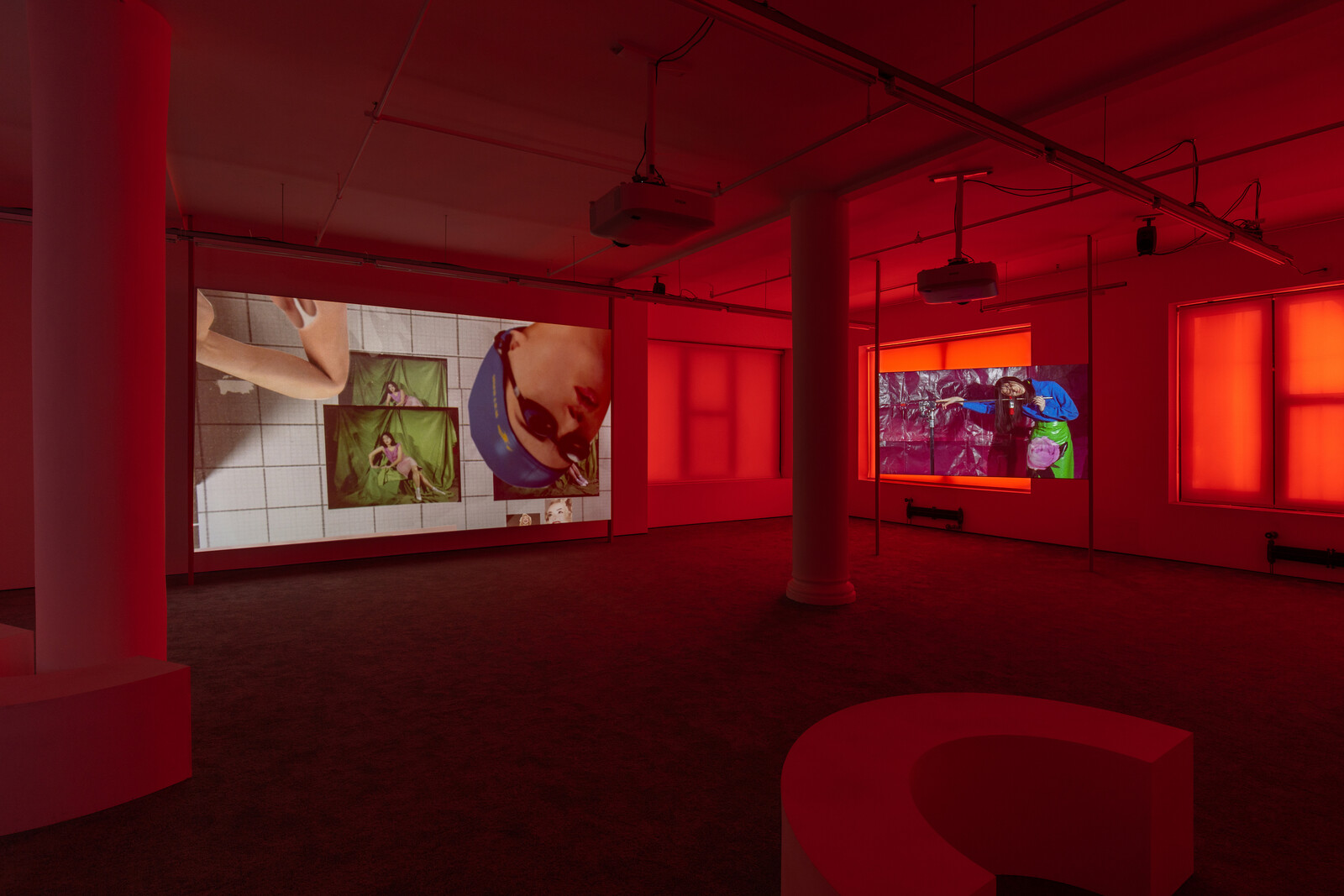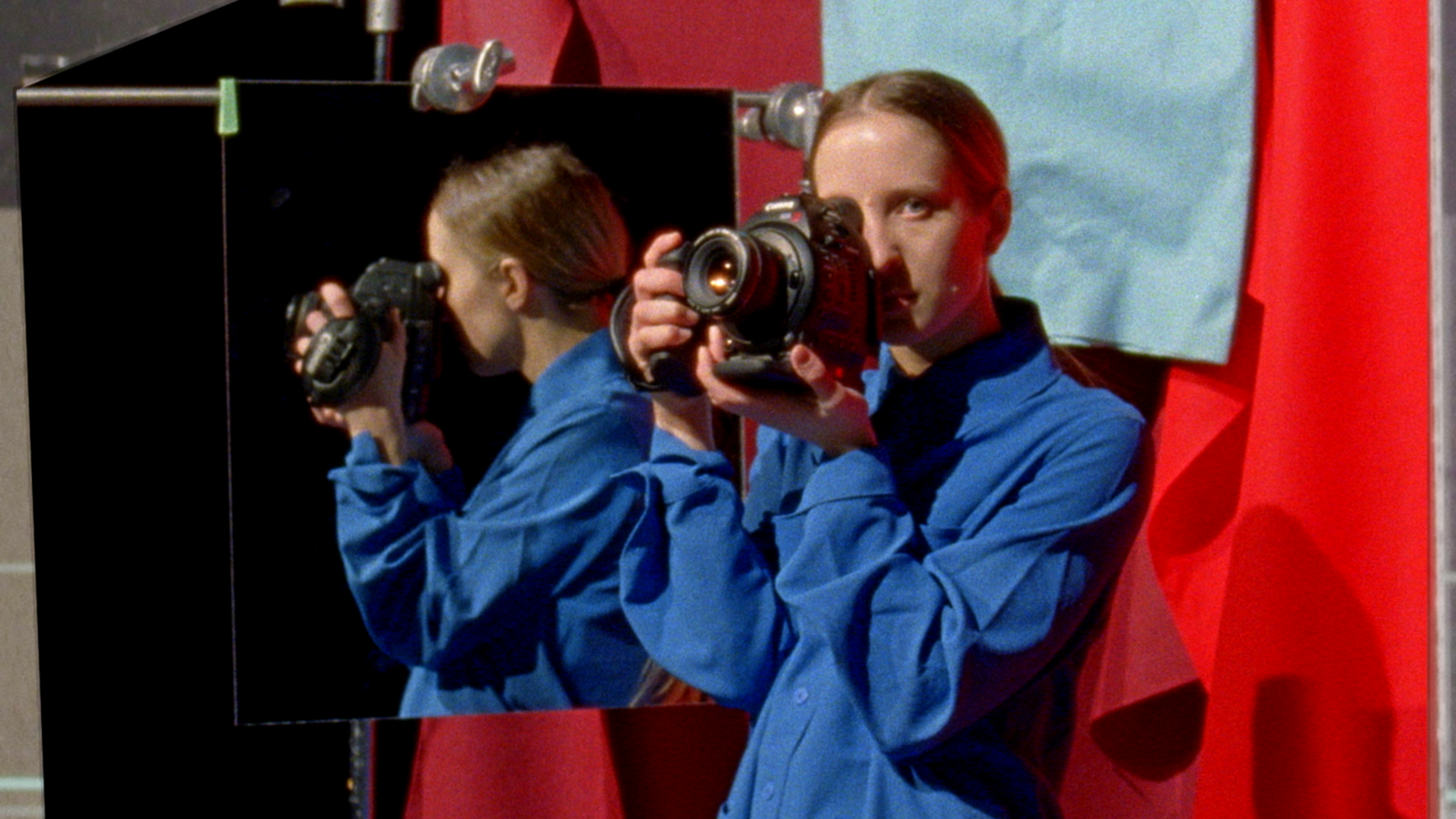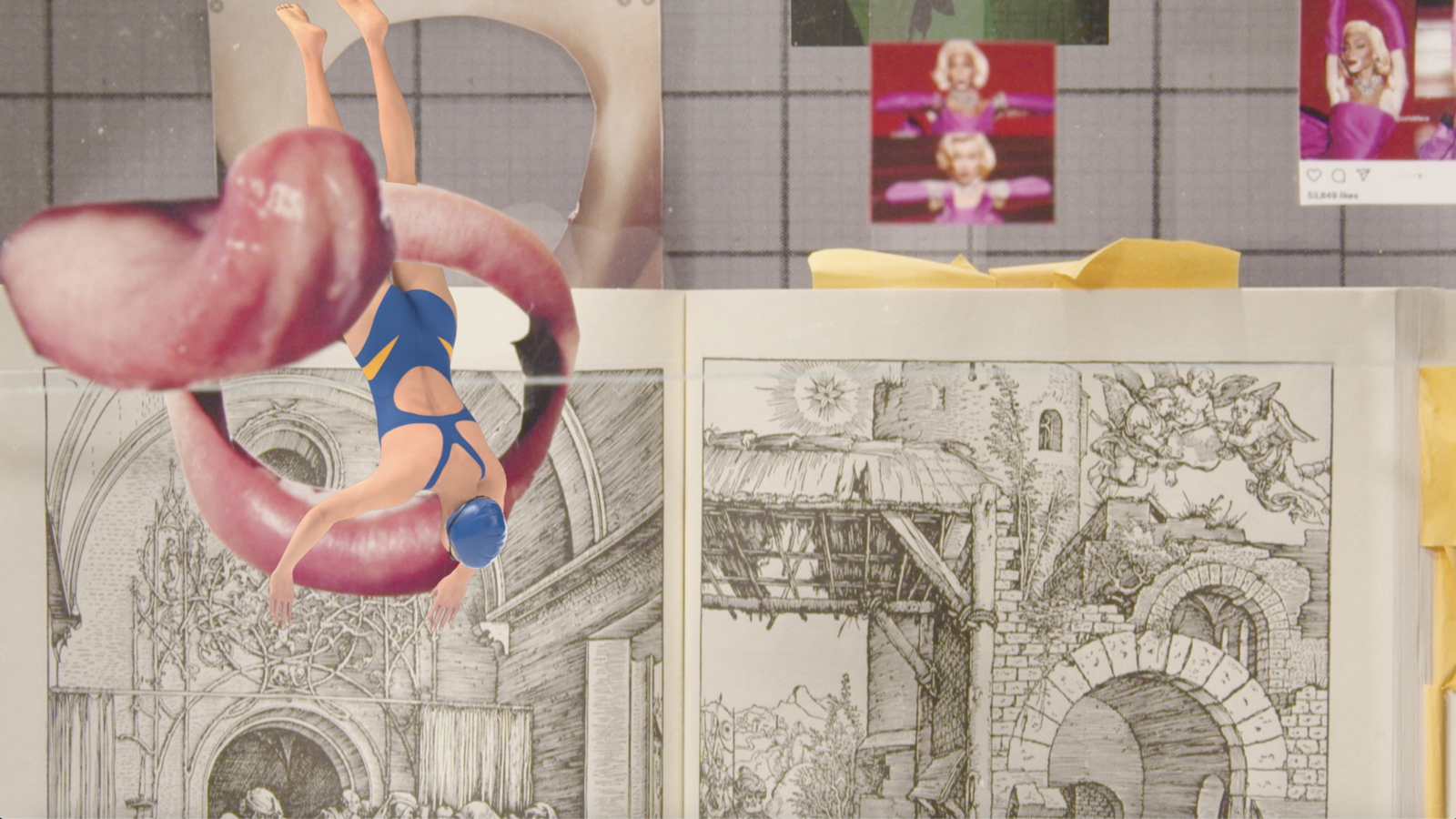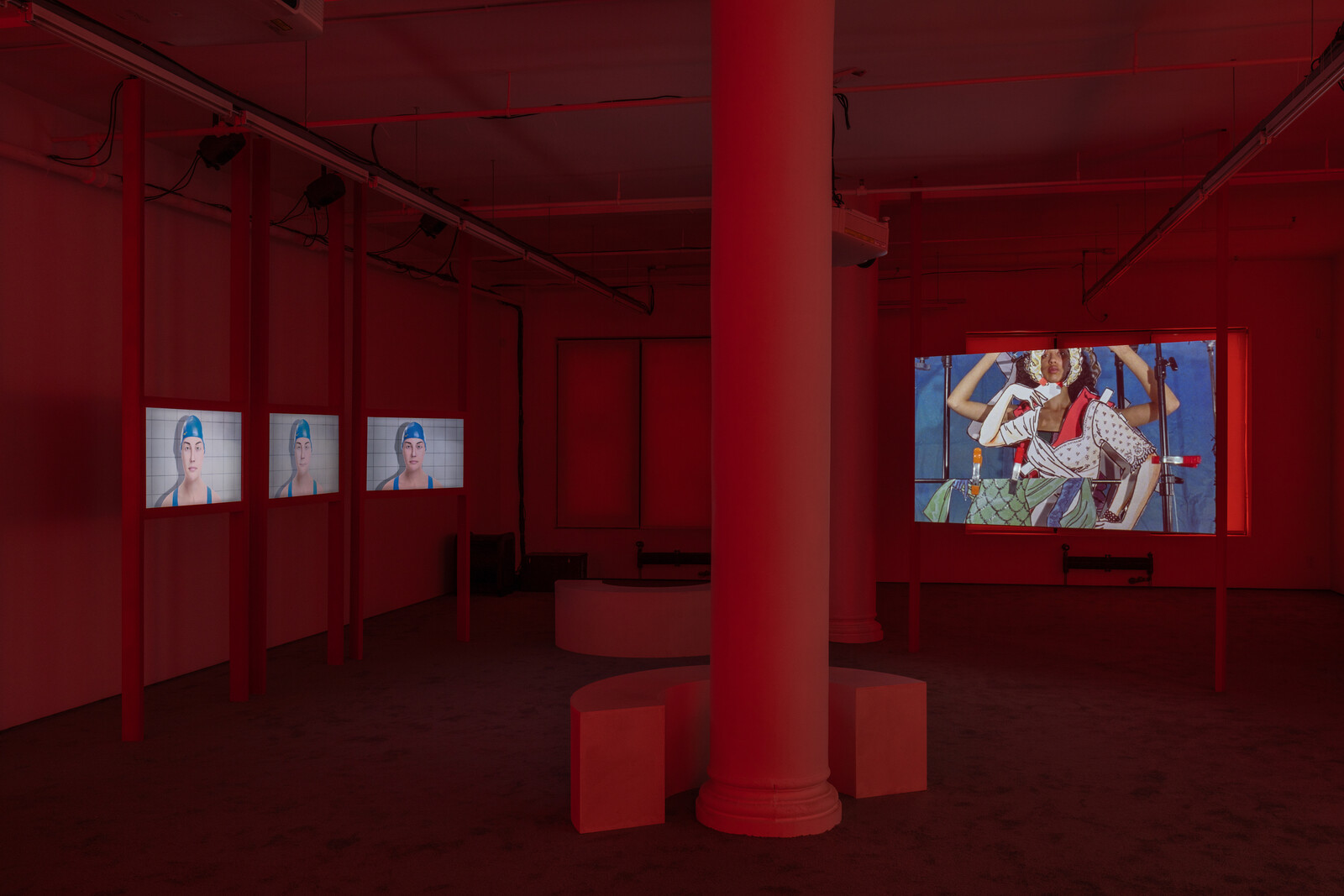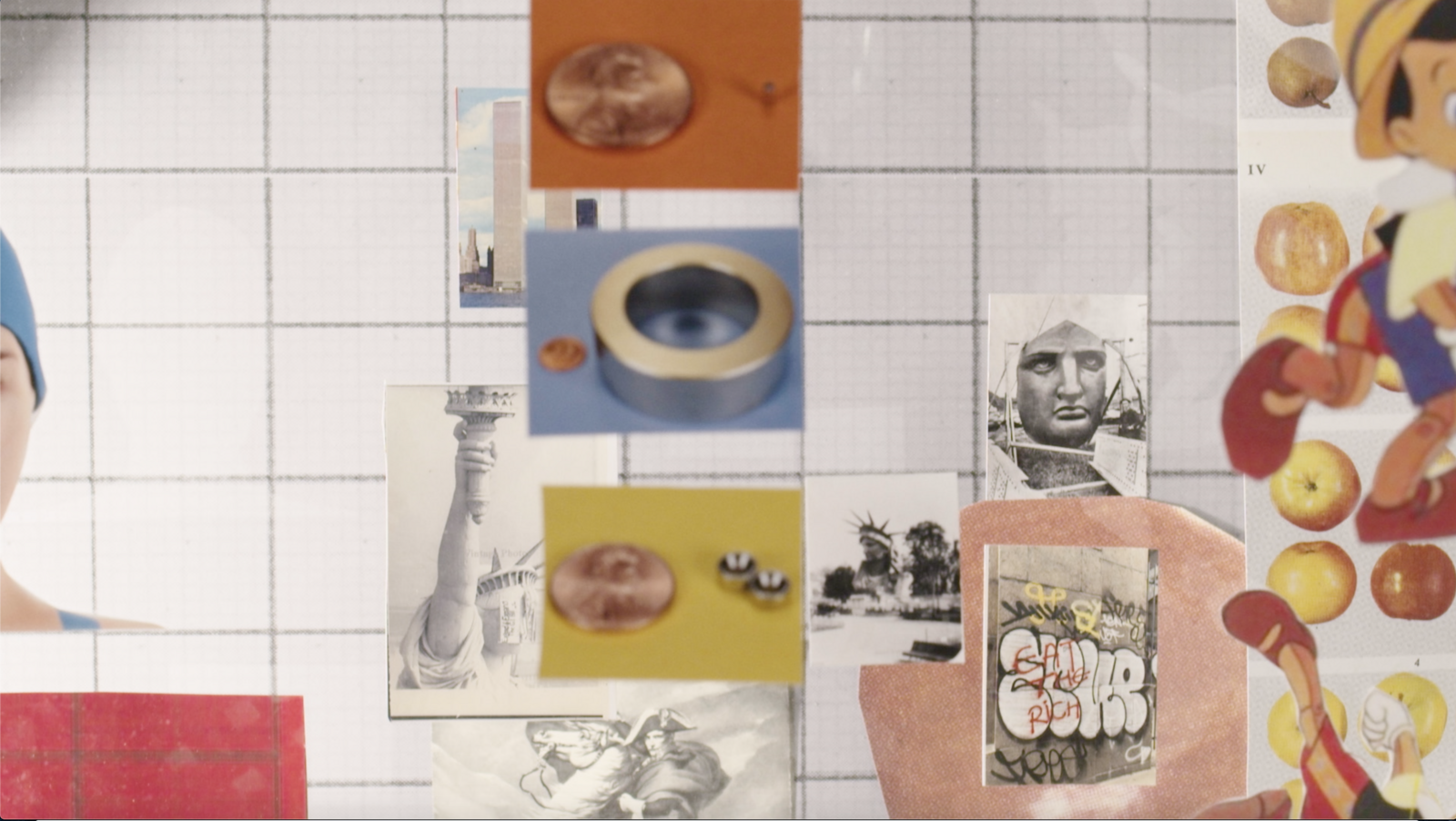Early in T.S. Eliot’s Four Quartets (1941), we are told to get out: “Go, go, go, said the bird: human kind / Cannot bear very much reality.” Part of Eliot’s poem makes up a small fraction of the voiceover narration to Sara Cwynar’s six-channel video installation Glass Life (2021), a maximalist meditation on living amongst ever-accumulating and constantly moving images.
Glass Life is as dense audially as it is visually. The images are accompanied by two voices reading a sequence of largely unattributed quotes culled from texts and speeches by Anne Boyer, Margaret Thatcher, and William Shakespeare, among many others. But this line seems to offer a particularly apt cipher for a work that is about a life lived in and through an excess of images and text—a life whose reality is always in question, where the distinction between activity and documentation collapses, and representation precedes its object. What is the internet but a massive archive? And what is an archive but an institution, as Jacques Derrida noted in the mid-1990s, obsessed with cheating death? “The archiving,” Cwynar’s two narrators say, “makes the self seem richer and more substantial even as it becomes more tenuous.”
The internet is a space that we have all, at one time or another, desperately wanted to leave (go, go, go…), usually as a result of the very excess that makes it such a compelling destination. It is also a repository of possibilities not explored. There is, then, in addition to the well-worn association between photography and death, a component of permanent sadness and regret in life experienced online: “Down the passage we did not take, / Towards the door we never opened.”
The experience of watching Glass Life is one of rapt attention—a desire to hear and see every part, to identify and catalog the images and objects that scroll rapidly past (archival photographs, household appliances, spreads from old books, gleaming apples, floating eyes and tongues). I rarely listen and look so carefully. For the duration of the piece, you can imagine an internet that operates differently: one that uses its excess for intelligent juxtaposition, a place to linger rather than a portal to commercial consumption. Unlike the virtual life that most of us lead, Cwynar’s video—which could fairly be described as a realist depiction of the internet—is not a way to “go, go, go” from too much reality, even if the images are compiled, layered, organized in ways that shake them loose from their practical, everyday uses or meanings. The piece begins, tellingly, with footage of protesters from recent demonstrations against police violence that was made visible to a large, national audience via the circulation of amateur video online. Images are not necessarily escapist.
The show’s title is a phrase borrowed from Shoshana Zuboff’s 2019 book The Age of Surveillance Capitalism and alerts us to Cwynar’s primary object of inquiry: a life lived, figuratively speaking, behind glass, where surveillance is ubiquitous and privacy impossible. Or, more interestingly, a place where, as the narrators put it, “we have to watch ourselves become ourselves in order to be ourselves, over and over again.” It is also a place, or an apparatus, or a medium that contains all other mediums, all previous apparatuses, and is all places by being no place at all. Virtual life is frustrating in this way: it resists criticism and description by being an impenetrable totality that generates idiotic “x but not x” attempts at illustration. Even the most intelligent formulations sound like a hedge. Take this line from the voiceover: “The alienation is real, as a surfeit of weak ties suffocates stronger bonds, yet stronger bonds seem available only through the online tools that have diminished them.”
Glass Life mimics the internet in its excesses and pacing. The digital avatar of a female figure swimming through the moving collage evokes our relationship to this interactive screen life. The three monitors positioned to face this spectacle, each containing the avatar’s swim-capped head, remind us that we are, as viewers, the passive objects of this virtual space in the same moments that we are thinking observers. The creation of the avatar-spectator (an example, perhaps, of the “promiscuity between the seer and the seen” remarked on by a narrator), the glut and simultaneity of images and information made possible by the apparent endlessness of virtual space, and this sense of being watched by these electronic faces placed as our equals in the audience, constitutes a qualitatively different reality. But Glass Life is also full of images—assembly lines, Henry Ford quotes, old machines, and ornate galleries filled with Old Masters and dated consumer products—that remind us of historical continuity and indicate all the ways that life online is not in the least bit unique. Not only does the centrality of old products and advertising images mark virtual life as a space largely organized around consumption, the age of many of these images reminds us that life has been organized in this way for some time.
Watching Glass Life—digesting it (the work is full of images of intestines)—reminded me of the importance of mundane images. Perversely, as we become increasingly immersed in advertising, bemoaning its political power has come to seem dated and trivial—a throwback to the 1990s of Adbusters and watered-down Chomsky. Or maybe we have just been at it for so long that we are now bored by our own accurate but impotent arguments. It is therefore quite a feat that Cwynar has made some of these questions interesting again. Her elegant, layered images remind us, as the narrators recite some unattributed Rancière, that “the distribution of the sensible, or the system of divisions and boundaries that define, among other things, what is visible and audible within a particular aesthetic-political regime,” is a serious matter.
